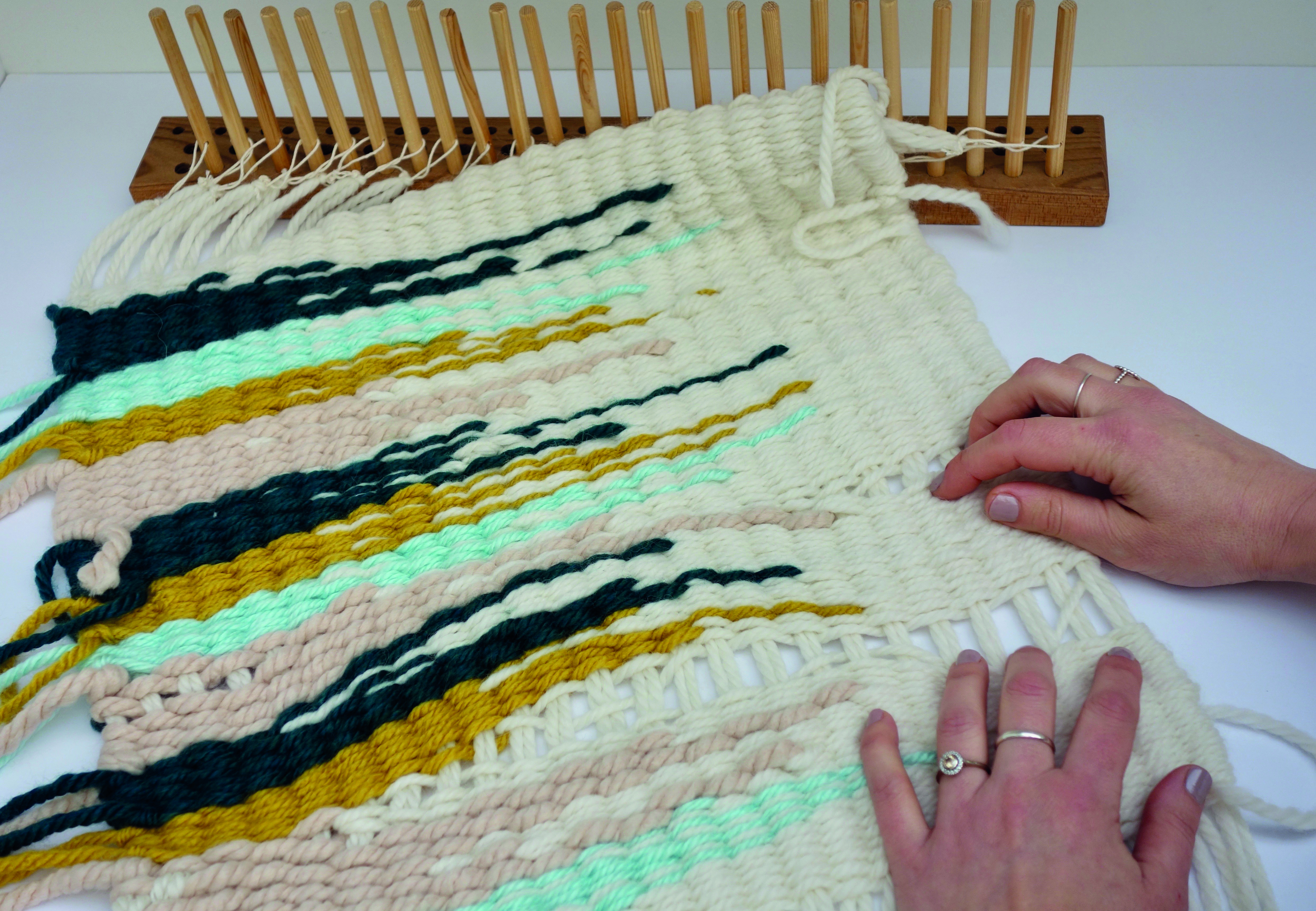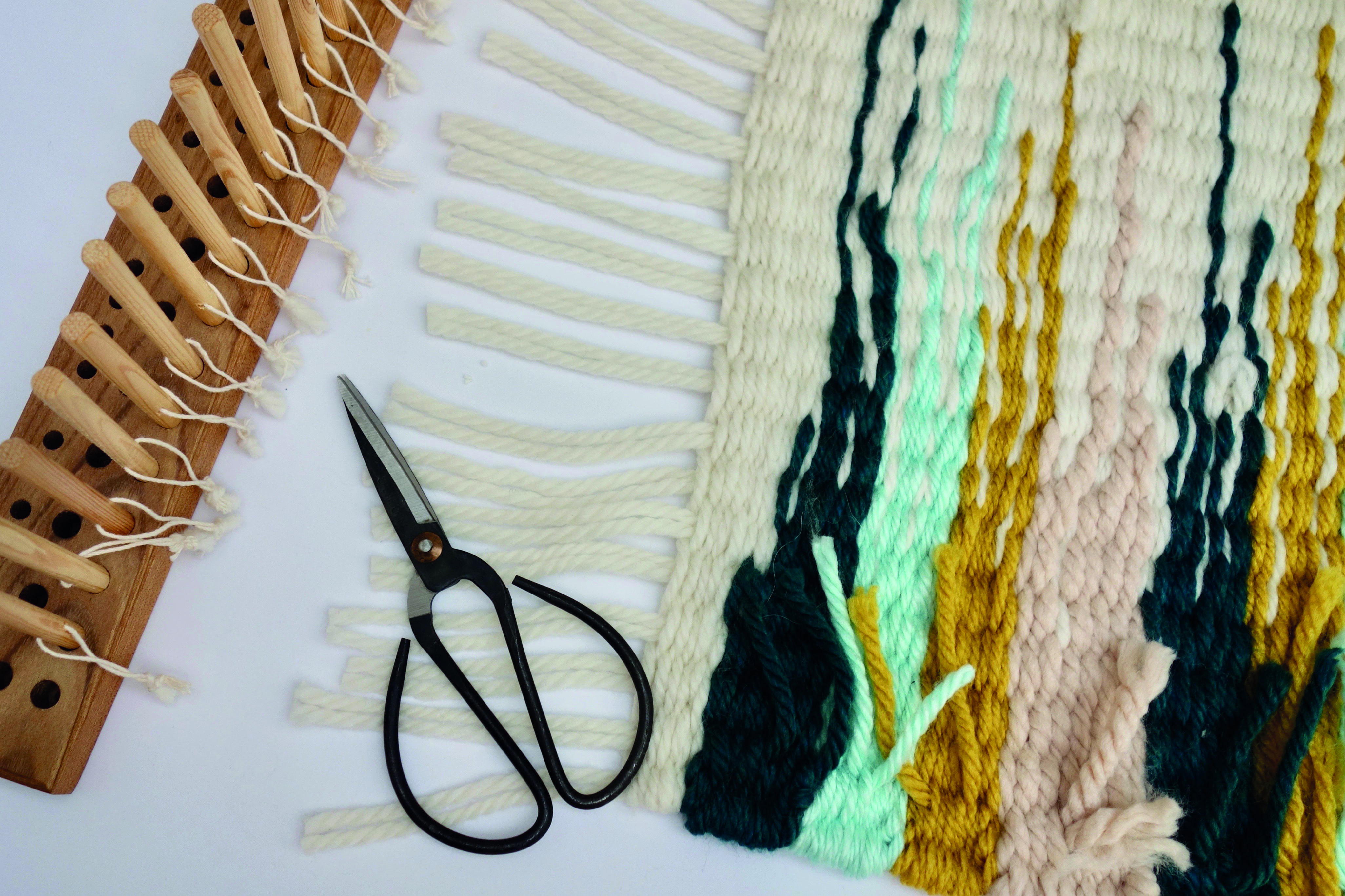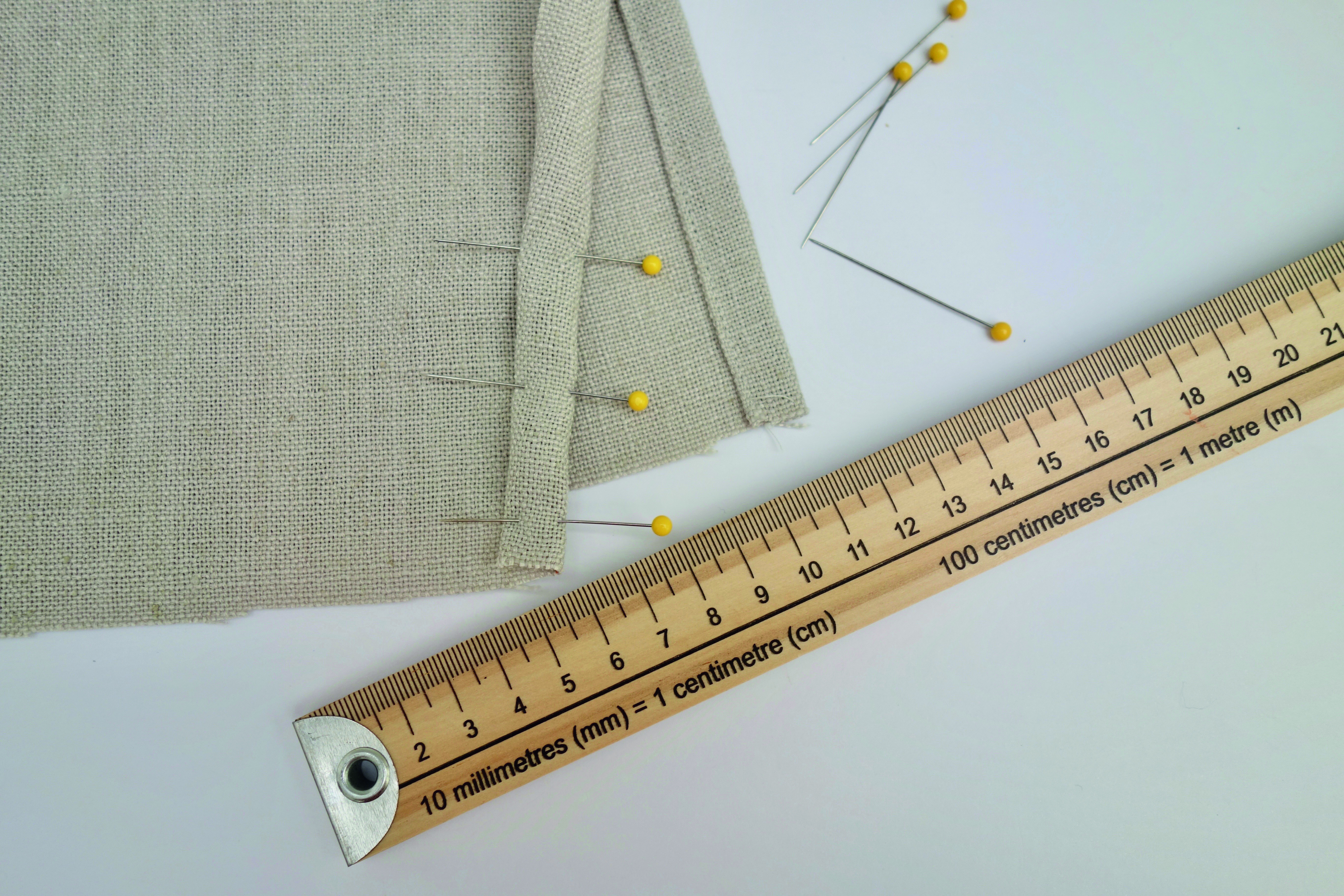It’s no secret that super chunky yarn is a total winner when it comes to handmade cushions, but this is the first time we’ve clapped eyes on paint-drip look textiles.
How’s it done? The frameless and satisfyingly hands-on peg loom weaving technique, which allows you to create fibre art in a freer way. And a cushion’s the best form for fully embracing the chunky yarn squishiness and showing off your handiwork.
Head to our library of macrame knots to find a tutorial for the lark’s head knot. As you weave, keep the tension even and loose enough that the woven section can easily glide down the warp. This way the weave won’t get caught in the knots as you’re pushing the project down.
This project was created by Stephanie for Mollie Makes magazine – for more easy-make craft projects and creative inspiration, subscribe to Mollie or click here to find out more.
Materials
Debbie Bliss Roma (70% wool/30% alpaca, 80m/87yd per 100g). two balls in Cream (53001) (YarnA)
Lion Brand Hometown USA (100% acrylic, 74m/81yd per 142g), one ball each in:
- Louisville Julep (117) (Yarn B)
- Montpelier Peacock (175) (Yarn E)
Knit Craft Hug It Out (100% acrylic, 58m/63yd per 200g), one ball in Shell (HH04) (Yarn C)
King Cole Big Value Super Chunky (100% acrylic, 81m/90yd per 100g), one ball in Mustard (3121) (Yarn D)
Two 45 x 35cm (17¾ x 13¾") pieces of backing fabric
43 x 43cm(17 x 17") cushion pad
How to do peg loom weaving













